Health care today is navigating through a sea of challenges, with innovation as the beacon leading the way. As you face the complexities of modern health care, solutions are crafted to meet the needs of a changing demographic, including an aging population and the rise of chronic diseases. It’s essential for health care providers and patients alike to adapt to the digital evolution that’s reshaping the industry. Tools and technology, like specialized apps, play a pivotal role in streamlining processes in long-term care homes, enhancing both efficiency and care quality.

Picture being able to handle healthcare staffing with a simple tap, guaranteeing patients get reliable care despite staff shortages. It’s not just a future dream, it’s happening now. Tech advancements link healthcare pros with homes, boosting resource management and patient care. In these systems, strong workforce data is created and analyzed. This data allows for the true story unique to each home when it comes to scheduling. Strategies are developed and implemented based on the workforce data.
Exploring Health Care Solutions
Understanding healthcare solutions involves recognizing the effects of value-based care efforts and technology solutions. These areas provide crucial insights of workforce data.
Value-Based Health Care Initiatives
Value-based care focuses on delivering high-quality services by incentivizing healthcare providers to prioritize patient outcomes rather than the volume of treatments. This approach aims to enhance patient satisfaction and reduce healthcare costs.
IIn value-based models, providers are compensated based on patient health outcomes. This system encourages preventive care and chronic disease management. By aligning incentives with patient health, these initiatives can streamline services and ensure that resources are used more efficiently.
Additionally, collaborations between providers, payers, and patients are essential. Such partnerships foster transparent communication and shared decision-making, which are crucial for achieving optimal health outcomes.
Impact of Technology Solutions
Healthcare technology solutions have made a significant impact on services and processes. They encompass electronic health records (EHRs), telehealth, and mobile health apps, enhancing accessibility and efficiency.
EHRs, for instance, enable providers to access patient data quickly, ensuring more coordinated and informed care. Telehealth platforms have bridged the gap in providing services to remote or underserved populations, exemplified in initiatives like Health811 in Ontario.
Mobile health applications offer patients tools for self-monitoring and management of chronic conditions. These technological advancements facilitate proactive healthcare, improve patient engagement, and reduce the burden on traditional healthcare systems, leading to better overall outcomes.
Staffing and shift-filling technology solutions offer health care the opportunity to ensure staffing is at full complement. Automated processes allow technology to take care of the tedious tasks so people can take care of the people.
Integration and Interoperability
Interoperability in healthcare is super important for improving patient care and making healthcare delivery more efficient. Being able to easily share data between different systems can change how providers offer services and manage resources.
EHR Systems
Electronic Health Records (EHR) are vital for achieving interoperability. EHR systems need to seamlessly connect with other health info systems so providers can access a patient’s complete medical history, including lab results, imaging, and doctor notes.
A big challenge is making sure different EHR systems can talk to each other effectively. Using standards like Health Level 7 (HL7) helps maintain data consistency. These standards let diverse EHR platforms share info reliably. Also, having an integrated EHR system reduces duplication and errors, leading to better patient outcomes.
Data and Analytics
Sharing health data through interoperability allows for advanced data analytics. This analysis can find trends, predict results, and shape treatment plans, improving decision-making in healthcare. Efficient data integration also helps manage population health by enabling thorough data examination.
A unified platform permits instant data collection and analysis, crucial for tracking patient health data. Standards like Fast Healthcare Interoperability Resources (FHIR) boost the ability to combine data from different sources, ensuring a smooth flow of information for well-informed clinical choices.
Electronic health record (EHR) systems and data analytics are key to a fully interoperable healthcare system. Using these tools can significantly boost patient care quality and efficiency.
StaffStat technology creates consistent workforce data to be used in the development of health human resources strategies. Once you understand the shift behaviour of your team, you will see the shift-fill rate increase. StaffStat technology has the ability to integrate with other software to ensure the administrative tasks are automated, which improves resources and operations.
Advancements in Pharmacy Management
Recent progress has made pharmacy management smoother and brought in new technologies to boost patient care and operational efficiency. This includes the development of Pharmacy Benefit Managers (PBMs) and the rise of specialty pharmacies.
Pharmacy Benefit Manager
Pharmacy Benefit Managers (PBMs) are crucial in managing prescription drug benefits for health insurers, Medicare Part D drug plans, and large employers. They negotiate prices with drug makers, create formularies, and handle drug claims.
Cutting-edge PBM solutions offer real-time benefits tools for instant info on medication costs and alternatives, reducing patient out-of-pocket expenses.
PBMs also use advanced data analytics to enhance drug use and find cost-saving opportunities. They connect with pharmacy networks to ensure patients have access to various pharmacies, including local ones and mail-order, for flexible medication delivery.
Patient-Centered Health Care

Patient Care Technology
Telemedicine platforms enable remote consultations, making healthcare more accessible to patients who cannot easily visit clinics. These platforms also provide patients with digital tools to monitor their health, such as mobile apps for tracking medication adherence or wearable devices that record vital signs.
Patient portals are another essential technology, offering patients direct access to their health information, appointment scheduling, and communication with their healthcare providers. This transparency empowers patients to take an active role in their healthcare, leading to improved adherence and satisfaction.
Furthermore, the integration of Artificial Intelligence (AI) and machine learning can predict patient needs and responses to treatments, facilitating proactive and customized care interventions.
Operational Efficiency and Cost Management
Improving operational efficiency and managing costs in healthcare are paramount for delivering quality care while keeping expenses in check. Staying up-to-date with industry developments and leveraging innovative strategies significantly impacts these goals.
Elevate your staffing operations with the Staffstat app. This game-changing technology provides real-time insights and data analysis, empowering organizations to effectively manage staffing needs and enhance performance.


 Log In
Log In